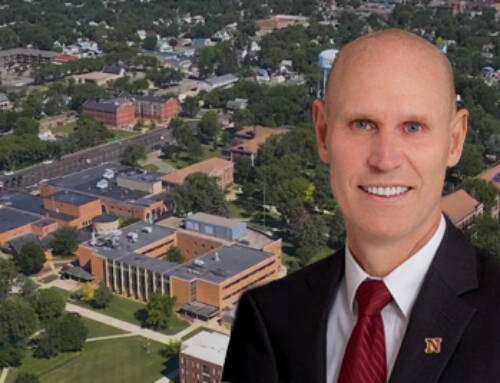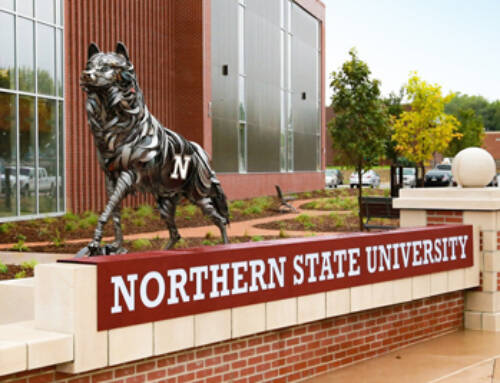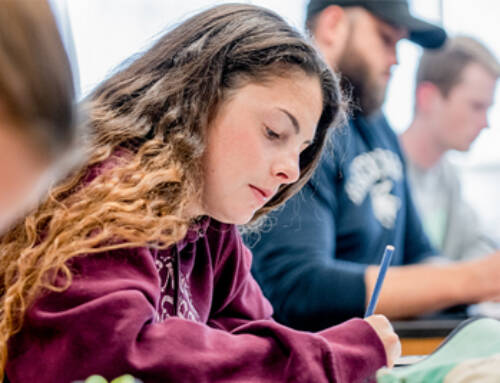PIERRE, SD – During last week’s board meeting, South Dakota Board of Regents President Tim Rave emphasized that the South Dakota system stands strong, particularly in comparison to neighboring states. The Board of Regents (BOR) is a nine-member governing body for our state’s six public universities and two special schools and is dedicated to the betterment of the state, the advancement of education, and the success of our students. By putting the student first and freezing tuition for five years, BOR is ensuring that our graduates will save big and go far in South Dakota.
Throughout the meeting, each South Dakota Board of Regents institution provided a brief yet comprehensive overview of the latest developments and activities occurring across their campuses. This annual overview was an opportunity to publicly highlight the successes occurring within the Regental system and the current focus area of each university and special school under the Board’s control.
“The South Dakota Board of Regents system is leading the way in providing high-quality, affordable educational offerings,” said BOR Executive Director Nathan Lukkes. “The updates presented to the Board highlighted many exciting activities and opportunities on our campuses, and a few challenges. These initiatives will help shape the future of our public university system.”
Black Hills State University: Nearly six months into his leadership, President Steve Elliott has strategically focused on two main topics: partnerships and enrollment. Building on the existing Strategic Enrollment Plan for Black Hills State University, the institution’s focus is on graduate enrollment, growing Black Hills State University—Rapid City, and building upon its successes on Ellsworth Airforce Base. BHSU is also embarking on a new civics initiative for the university system. They will spearhead the development of the Center for Civic Engagement, which will design programming, organize events, and create supporting resources to benefit students across the state.
Dakota State University: President José Marie Griffith began her update by celebrating the accomplishments Dakota State University has seen over the past year. Through the success of their recruitment marketing campaign, they have attracted faculty and students to the university’s expanding computer science programs. President Griffiths highlighted DSU’s programs and mentioned their impressive 99 percent placement rate. In addition, 85 percent of in-state students continue to live and work in South Dakota, and an additional 10 percent of out-of-state students join our state’s workforce.
Northern State University: After years of strategic capital investments, Northern State University’s campus continues to transform, with new facilities and infrastructure enhancing the Aberdeen community. Earlier this spring, NSU broke ground on the Business and Health Innovation Center, aiming to meet critical business, banking, finance, accounting, and nursing workforce needs. Gerber Hall is also transforming to better suit student, staff, and visitor needs. NSU President Neal Schnoor explained that the hall is home to vital programs such as the School of Education, Teacher Education, Sports Sciences, Psychology, and Counselor Education.
South Dakota Mines: President Rankin’s update for South Dakota Mines focused on research growth. In the past six years, the special-focused university has grown its research from 13 million dollars to 23 million dollars in awards. The Nucor Mineral Industries Building will be completed later this year and will be the hub for geology, geological engineering, mining engineering, and metallurgical engineering programs. The facility will provide state-of-the-art teaching and research spaces for these core disciplines. Research numbers are just one of the factors on the rise. SDM retention rates hit 84 percent this year, and persistence rates from the fall to the spring semester were 94 percent. An excellent way to complete his final academic year, as President Rankin begins his retirement next month.
South Dakota State University: Eyes on the future were the focus of South Dakota State University’s update, and for our state’s largest land-grant university, the future is research. SDSU President Barry Dunn revealed the institution’s plan to obtain R1 Carnegie Classification, a first for South Dakota. This reclassification would offer a vibrant and compelling learning environment for students and knowledgeable business spinoffs for the city of Brookings and other communities. South Dakota will benefit from economic growth, business expansion facilitated by emerging technology, and an educated workforce, all powered by the growing research impacts.
University of South Dakota: Building renovation and preservation has been a priority for the University of South Dakota over the past few years. The South Dakota Union Building is undergoing significant updates that will transform the space for one of USD’s largest departments. Home to the Department of Psychology, Psychological Service Center, the Disaster Mental Health Institute, and the Advance Visualization Laboratory, students and faculty will be welcomed back to campus this fall to enhanced classroom and lab spaces. Preservation projects like this will continue on the Vermillion campus as the Churchill-Haines Laboratory begins renovations later this year.
The South Dakota School for the Blind and Visually Impaired: The South Dakota School for the Blind and Visually Impaired is a K12 accredited school by the South Dakota Department of Education under the control of the South Dakota Board of Regents. Superintendent Jessica Vogel provided an update on the Aberdeen campus and the school’s outstanding services. Located on the Northern State University campus, SDSBVI continues to build on its relationships with many of the university’s programs.
South Dakota Services for the Deaf: The South Dakota Services for the Deaf is also under the control of the Board of Regents and is an all-outreach program for children who are deaf and hard of hearing. With physical locations in Sioux Falls and Rapid City and a statewide presence, SDSD was able to perform more than 22,000 hearing screenings in 2023. Since 2009, when SDSD programming switched to entirely outreach, its client numbers have grown by nearly 90 percent.




